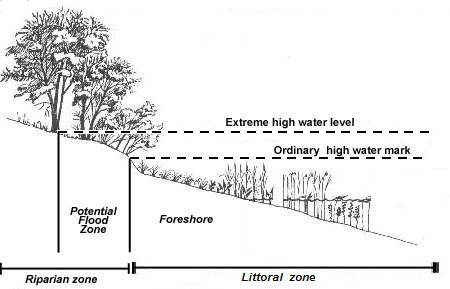How are littoral and riparian zones different?
1 Answer
This depends on the context and the geographic location. Typically, the littoral zone is submerged whereas the riparian zone is generally not submerged (other than cases of flooding).
Explanation:
Generally speaking, the riparian zone grades into the littoral zone, which includes the area at the margins of the body of water. The littoral zone is submerged whereas the riparian zone is generally not submerged (other than cases of flooding).

However, differences between the two terms depend on who is defining the terms and how they are being used.
The littoral zone is the area close to the shore of a river, lake, or the ocean. This area is submerged in water to some degree. It includes the intertidal zone but area far beyond the intertidal zone can also be included when referring to the littoral zone in some cases.
The riparian zone is the area in-between the land and a river or stream. It's the area where the water meets the land but, generally speaking, this area is not submerged.

The riparian zone is specifically a section of land and the littoral zone contains the actual body of water and is a section of it. The images above follow this logic.
However, in the US, lake littoral zones are actually considered riparian zones , thus they include area that is typically excluded when these terms are used.

